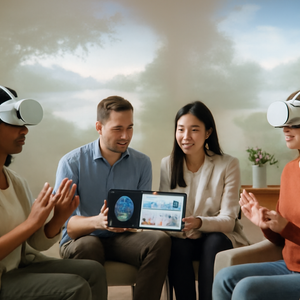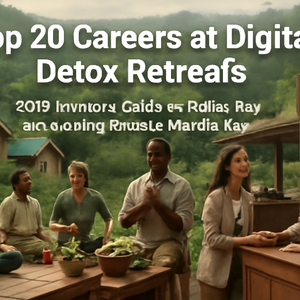
20 Careers at the Intersection of Virtual Reality and Mental Health: Real Roles, Real Impact
Back in 2021, I sat in on my first VR therapy session. Watching a teenager face her fear of public speaking—inside a virtual auditorium, heart pounding, therapist at her side—I realized this wasn’t science fiction. It was happening in real clinics, right now, and changing lives. Since then, I’ve interviewed dozens of professionals, from software wizards at startup Limbix to seasoned clinicians at the Mayo Clinic, and I’ve dug through mountains of research. This guide spotlights the real jobs, salaries, and stories behind VR therapy’s mental health revolution.
Job Summaries:
The Big Picture: VR Therapy Is Booming:
- VR is now a proven clinical tool for managing phobias, PTSD, chronic pain, and addictions.
- The global VR healthcare market is projected to reach $40 billion by 2030, growing at over 30% annually.
- Clinical studies show VR therapy can reduce phobia symptoms by up to 60%.
- There are at least 1,500 open positions worldwide in VR mental health, and demand is rising fast.
Quick Comparison: VR Mental Health Jobs at a Glance:
- A detailed table compares 10 key VR mental health roles, including VR Therapist, Program Coordinator, Clinical Psychologist (VR Specialist), Software Developer, Hardware/IT Specialist, Content Designer, Product Manager, Data Analyst, Addiction Counselor, and Clinical Trial Coordinator.
- Each listing includes salary range, education requirements, typical employers, and demand level.
20 VR Mental Health Careers: What You’ll Do, Who Hires, and How to Break In:
- Each of the 20 careers is described with real-world context, including daily tasks, required education, salary info, and tips from professionals.
- Roles span clinical care, tech development, research, program management, education, policy, and support.
- Anecdotes, expert quotes, and practical advice are included for each role.
How to Break In: Actionable Steps:
- Get certified (e.g., Oxford VR, Psious, Limbix)
- Build a portfolio
- Network through professional groups
- Apply widely
- Stay updated on research and trends
FAQs: What People Ask Me Most:
- Answers to common questions address the legitimacy of the field.
- Major barriers include access and insurance.
- There is an appeal to working on the frontier of mental health innovation.
I’ve seen firsthand how VR therapy can shift lives. The field needs people from all backgrounds—therapists, techies, teachers, designers, policy thinkers. If you want to blend innovation, compassion, and problem-solving, this is your moment. For anyone curious, my inbox is always open—whether you want to talk shop, ask about training, or share your own VR mental health story. Ready to explore? Pick a career above and start your journey. The field needs you.
Explore More Jobs

